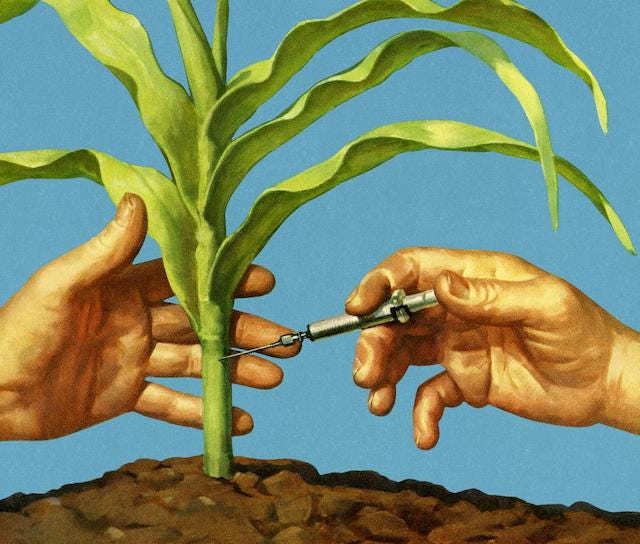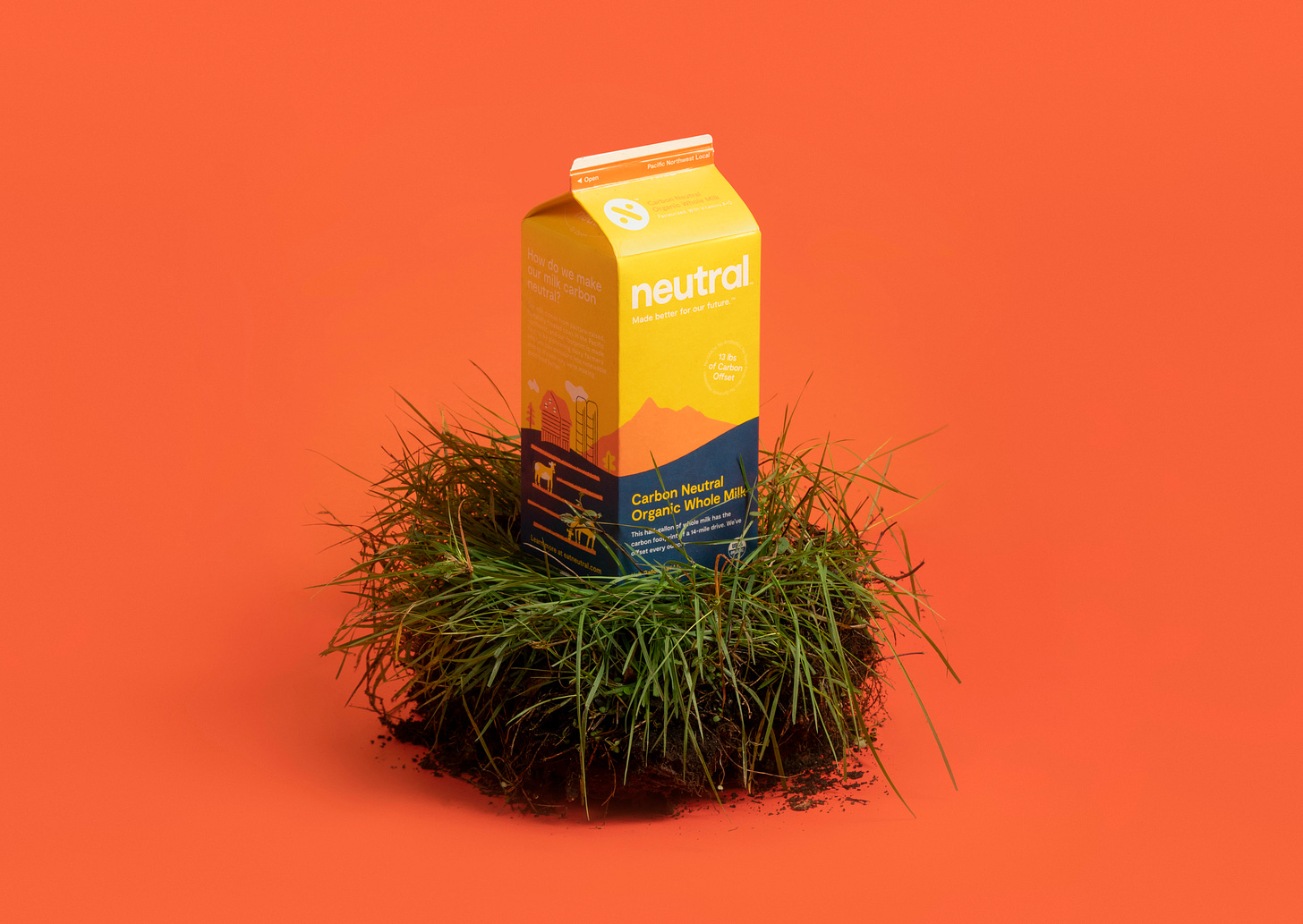🌿 The root cause of nutrient erosion
Welcome back to The Regeneration Weekly, a newsletter delivering regenerative food and agriculture news to your inbox every Friday. Not a subscriber yet?
Health: Over the past several decades, extractive agricultural practices have degraded millions of acres of farmland while simultaneously decreasing the concentrations of vitamins, minerals, and micronutrients in grains, fresh fruits, and vegetables. During a comparable period, diseases related to dietary deficiencies such as obesity, diabetes, and heart disease have risen to epidemic levels. With this in mind, it’s hard to avoid the inextricable link between what we eat and our overall well-being. And our modern food system is adept at producing inexpensive, nutrient-poor foods that strip the land of sustenance. But cheap food comes with a steep cost to the human microbiome, which comprises over 100 trillion microbes (bacteria, fungi, and viruses) that are essential for our development, immunity, and nutrition. Yet, instead of allocating money towards fixing our farming system, which grows the crops we consume, the US government continues to grant the Department of Health and Human Services a colossal budget ($1.37 trillion in 2021) to spend on reactively treating health conditions perpetuated by diets lacking proper nutrients.
Even though the US has some of the richest soils in the world, decades of industrial farming practices have left arable land devoid of the nutrients, minerals, and microbes that support healthy plant life. As a result, we now live in a country where each successive harvest yields less nutritious foods. In 2004, a landmark report conducted at the University of Texas at Austin studied USDA nutritional data from both 1950 and 1999 for 43 different vegetables and fruits. The researchers found “reliable declines” of up to 38 percent for six nutrients - protein, calcium, phosphorus, iron, riboflavin (vitamin B2), and vitamin C. The same study revealed higher concentrations of water and carbohydrates in our crops. And while grain yields have more than doubled over the past half-century, the protein concentrations in our wheat, rice, and barley have withered by as much as 30 percent, 18 percent, and 50 percent, respectively. A few of the biggest culprits behind this nutritional decline include but are not limited to:
Plant Genetics: Domestic plants' nutritional decline over the last 50-70 years is partially explained by changes in cultivated varieties. Since the Green Revolution of the 1960s, agricultural scientists have been genetically engineering (GE) crops for traits such as yield, growth rate, and herbicide resistance - sacrificing nutrition for efficiency. “Roundup Ready” alfalfa, for instance, has been shown to have lower nutrient levels (of 11 minerals) when compared to its non-GE counterpart. And even though GE crops generate bigger grains and produce, they also contain an increased amount of starch, which dilutes the plant of other minerals and nutrients.
Soil Depletion: Aside from plant genetics, there are environmental factors that perpetuate a decline in nutrients. In industrially farmed soils, beneficial organisms like mycorrhizal fungi are killed off by intensive tillage, monocropping, and a cocktail of chemicals - including fungicides, pesticides, and herbicides. In aggregate, these practices diminish the regulation and uptake of positive micronutrients (calcium, magnesium, iron, manganese, copper, zinc, cobalt, and nickel) by as much as 80 percent. And according to the USDA, the cost of soil erosion, in terms of land productivity, from agriculture in the US is about $44 billion per year.
Carbon Dioxide (C02): Mounting evidence suggests that climate change, which is driven, in part, by emissions from industrial agriculture - is complicit in driving nutritional declines in plants. Even though plants need carbon to live, the rising levels of CO2 increase photosynthesis, the process that allows plants to transform natural sunlight into energy-rich organic compounds. In truth, this phenomenon dubbed the “great nutrient collapse” has helped plants grow bigger, faster. Yet rising CO2 levels act like empty calories or “junk food” for crops - leading them to pack in more carbohydrates like glucose (a type of sugar) at the expense of other nutrients like protein, iron, and zinc. The growing proportion of sugar and starch content in plants is likely to further contribute to our nation’s healthcare crisis.
Transportation: Fruits and vegetables will never be as nutritious as they are the moment you harvest them - losing between 15 to 77 percent of their vitamin content within a week of being picked. Unfortunately, modern-day food has a long journey from farm to store to table. And in many cases, North American crops typically sit in refrigerated storage for somewhere between 1 week to 12 months before being redirected to grocery stores. Thus, by the time a salad reaches your plate, much of the nutrient content might have already vanished.
Worldwide, roughly 2 billion people suffer from “hidden hunger,” a condition defined by a deficiency of micronutrients - including iron and zinc - and essential minerals (calcium, magnesium, and selenium) despite adequate caloric intake. Diets low in these essential nutrients impair physical and cognitive development in children, increase maternal deaths, and disrupt immune function. The countries most vulnerable to the impacts of nutrient collapse are often the poorest, where millions of people rely on a few staple crops. In Bangladesh, where 36 percent of children under 5 years old are suffering from chronic malnutrition, rice provides up to 70 percent of daily caloric intake. And in the US, Americans are buying more starchy plant-based products (derived from cereal grains like corn, soybean, and wheat) and consuming higher quantities of calories to compensate for their lower nutritional levels. If things don’t change, we are on a path towards a dystopia where we are starving ourselves of nutrients while simultaneously becoming obese.
With this in mind, it’s not just up to medical professionals to regulate health, but also farmers and policymakers, who control the way in which our food is produced and regulated. And when considering the health implications of a continued decline in plant nutritional density, it is imperative that farming goals shift from a focus on crop yield to a more integrated emphasis on ecological health, microbial diversity, and soil quality. The key to healthier produce is healthier soil, which produces the nutrients and bioactive compounds that make their way to us through the plants we eat. The more root symbionts (microorganisms) in our soil, the more efficiently plants cycle nutrients - from minerals to secondary plant metabolites and beneficial fatty acids. Therefore, the biodiversity, which regenerative agricultural practices seek to enhance, increases the availability of nutrient-dense food, restores degraded land, and enables the human gut microbiome to combat disease.
Watch: What I’ve Learned is a video series about health, productivity, and unconventional information. With the help of Dr. Frank Mitloehner, a professor and air quality specialist in cooperative extension in the Department of Animal Science at UC Davis, Joseph Everette, the host, pieces together a compelling argument for why eating less meat won't save the planet.
Shop: Neutral is most likely - very most likely - the first US-based carbon-neutral food company. Their mission is to bend the arc of history, fundamentally alter the trajectory of global warming, and forever change the carbon footprint of food eaten around the world. Founded in 2019, they recently started the process of evaluating emissions-reduction projects with their first group of dairy farmers in the Pacific Northwest. These farmers, who also supply them with organic, pasture-raised milk and half & half - and who are already sustainability pioneers - will likely be producing lower-carbon footprint milk and cream by the end of the year. Neutral is available in Portland, Oregon (its hometown), Seattle (Met Market) in the coming weeks, and nationally later this year. It's also available to residents of Oregon and Washington through Imperfect Foods. Learn more at eatneutral.com.
Disclaimer: The Regeneration Weekly receives no compensation or kickbacks for brand features - we are simply showcasing great new regenerative products.
The Regeneration is brought to you by Wholesome Meats | Soilworks | PastureMap.





